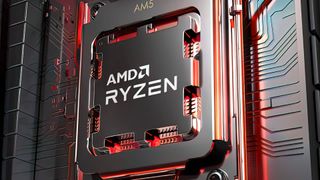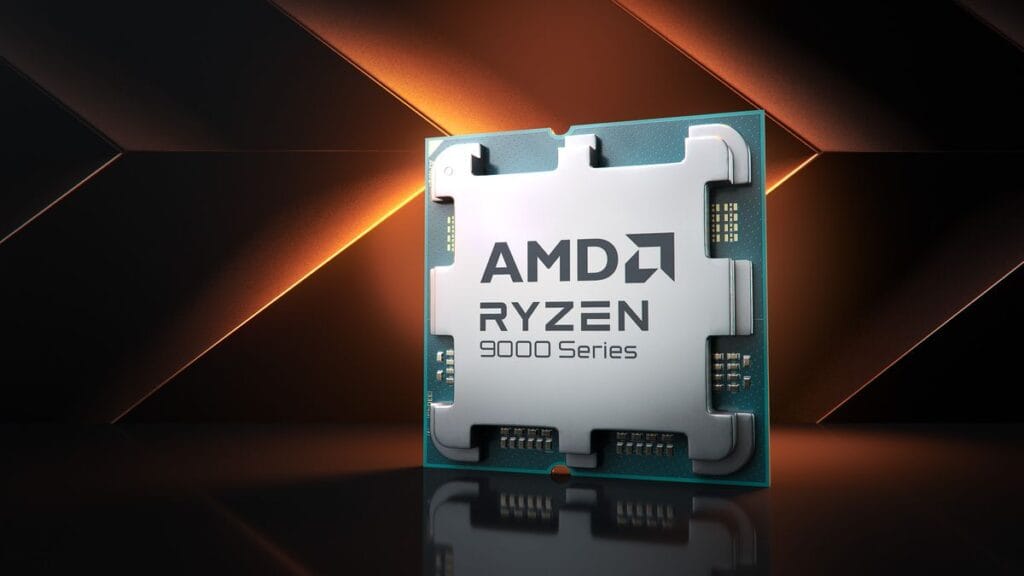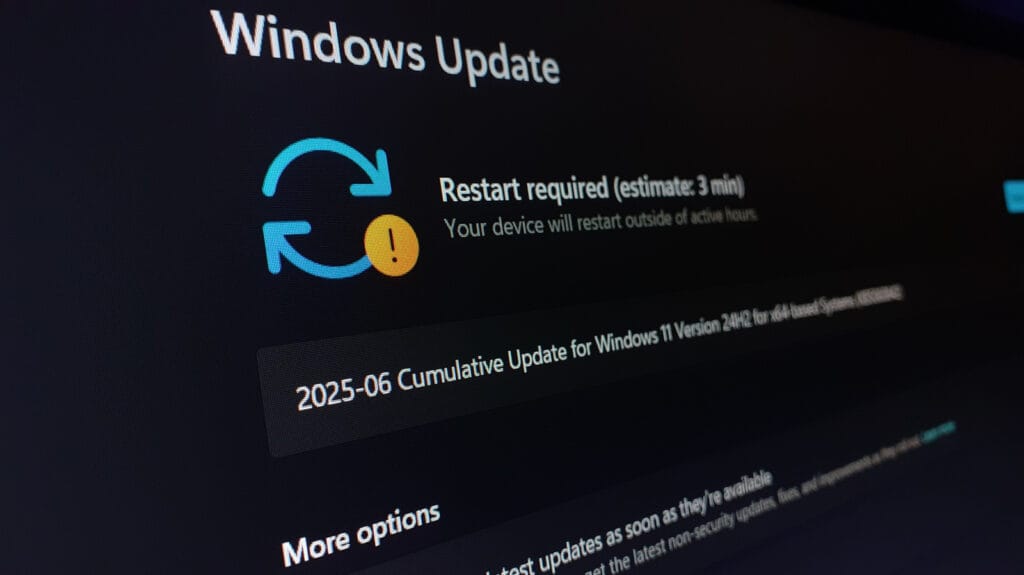There’s no question that the AMD Ryzen 9000 series had a troubled launch, but AMD’s latest fixes for the entire lineup of chips could go a long way to addressing the concerns of gamers and creators who might be holding off on buying one of the new chips.
The fix, which is part of the new AGESA ComboAM5 PI 1.2.0.2 microcode update to various AM5 motherboard UEFI BIOSs, comes in two parts, according to TechPowerUp.
First, users can configure the PPT of the AMD Ryzen 9600X and AMD Ryzen 9700X (cTDP) in the updated BIOS up to 140W (which translates to 105W TDP) while maintaining their warranty. This effectively allows users to overclock the base 65W (88W PPT) chips without the risk of wearing them out and not being able to replace them.
Second, the BIOS updates will improve the inter-core latency performance on the AMD Ryzen 9900X and AMD Ryzen 9950X. These two chips use two Complex Compute Dies (CCDs) rather than a single monolithic die for all cores.
In order to get the two CCDs — which have 6+6 and 8+8 cores for the AMD Ryzen 9900X and 9950X, respectively — to act as a single unit, there needs to be an interconnect between the two CCDs. This introduces latency whenever cores need to communicate with each other or when the OS scheduler needs to assign work to various CPU cores.
Typically, the chips are supposed to be optimized to negate this latency as much as possible, but according to AMD, the issue with the high core-to-core latency of the 9900X and 9950X “was mainly due to some corner cases where it takes two transactions to both read, and write, when information is shared across cores on different parts of a Ryzen 9 9000 series processor.”
“However, we’ve been working on optimizing this since the launch of the 9000 series. In the new 1.2.0.2 BIOS update, we’ve managed to cut the number of transactions in half for this use case, which helps reduce core-to-core latency in multi-CCD models.”
{ window.reliablePageLoad.then(() => { var componentContainer = document.querySelector(“#slice-container-newsletterForm-articleInbodyContent-NXxXCHTUB3wvMu8kKGRRA9”); if (componentContainer) { var data = {“layout”:”inbodyContent”,”header”:”Get daily insight, inspiration and deals in your inbox”,”tagline”:”Sign up for breaking news, reviews, opinion, top tech deals, and more.”,”formFooterText”:”By submitting your information you agree to the Terms & Conditions and Privacy Policy and are aged 16 or over.”,”successMessage”:{“body”:”Thank you for signing up. You will receive a confirmation email shortly.”},”failureMessage”:”There was a problem. Please refresh the page and try again.”,”method”:”POST”,”inputs”:[{“type”:”hidden”,”name”:”NAME”},{“type”:”email”,”name”:”MAIL”,”placeholder”:”Your Email Address”,”required”:true},{“type”:”hidden”,”name”:”NEWSLETTER_CODE”,”value”:”XTR-D”},{“type”:”hidden”,”name”:”LANG”,”value”:”EN”},{“type”:”hidden”,”name”:”SOURCE”,”value”:”60″},{“type”:”hidden”,”name”:”COUNTRY”},{“type”:”checkbox”,”name”:”CONTACT_OTHER_BRANDS”,”label”:{“text”:”Contact me with news and offers from other Future brands”}},{“type”:”checkbox”,”name”:”CONTACT_PARTNERS”,”label”:{“text”:”Receive email from us on behalf of our trusted partners or sponsors”}},{“type”:”submit”,”value”:”Sign me up”,”required”:true}],”endpoint”:”https://newsletter-subscribe.futureplc.com/v2/submission/submit”,”analytics”:[{“analyticsType”:”widgetViewed”}],”ariaLabels”:{}}; var triggerHydrate = function() { window.sliceComponents.newsletterForm.hydrate(data, componentContainer); } if (window.lazyObserveElement) { window.lazyObserveElement(componentContainer, triggerHydrate); } else { triggerHydrate(); } } }).catch(err => console.error(‘%c FTE ‘,’background: #9306F9; color: #ffffff’,’Hydration Script has failed for newsletterForm-articleInbodyContent-NXxXCHTUB3wvMu8kKGRRA9 Slice’, err)); }).catch(err => console.error(‘%c FTE ‘,’background: #9306F9; color: #ffffff’,’Externals script failed to load’, err)); ]]>
Sign up for breaking news, reviews, opinion, top tech deals, and more.
While the reported core-to-core latency might still be higher than with a monolithic die, in real-world use, this fix should boost the multi-core performance that users experience with these chips.

(Image credit: AMD)
So I haven’t actually finished reviewing the AMD Ryzen 9000 series, as some may have noticed. There are a lot of scheduling reasons for that, but I did manage to test all four chips and found, like many, that the performance gains were not great, if they existed at all.
Across the board though, I was more impressed by the power efficiency of the chips, which effectively let you have Ryzen 7000 series performance at lower power levels. I actually thought that this was pretty great, since the Ryzen 7000 series are fantastic chips and offer more than enough performance for just about everyone, and I’ve been on a tear about how chipmakers need to call a truce on performance and focus on efficiency.
That said, I understand why many would want to have more performance and better uplift gen-on-gen, even if I’d counsel them to ask whether that’s really necessary.
In either case, though, it’s generally a good rule to offer consumers more choice rather than less, and in the case of the 9600X and 9700X, you get to decide whether better performance or more efficiency best suits your needs while not having to worry that you’re going to lose your investment in a chip because you increased its power draw.
As for the 9900X and 9950X, these two chips are specifically designed and marketed for high-performance use, so the importance of the gen-on-gen uplift is obvious. In that case, any fix for the underwhelming multi-core performance of these chips is welcome, though how much gain users will benefit from remains to be seen.
Of course, all this comes as Intel appears ready to introduce Intel Arrow Lake desktop processors later this month, meaning that the couple of months lead time that AMD had to gain an advantage early on in this generation might have been missed. It’ll now have to really fight it out with Intel to maintain its recent market share gains, but considering we haven’t seen what Intel Arrow Lake can do yet, it’s still a jump ball as to who will come out on top in the end.



